Buichi Terasawa (1955-2023)
September 12, 2023 · 0 comments
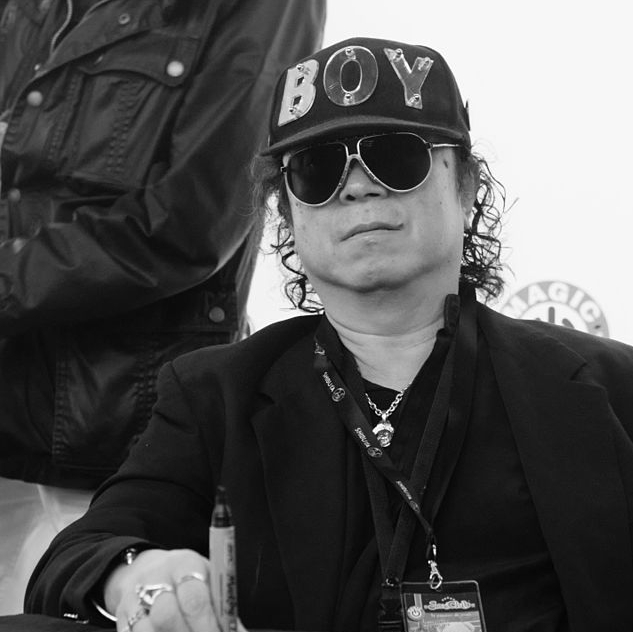
The manga artist Buichi Terasawa, who died on 8th September, enjoyed a meteoric rise to fame in the 1980s, becoming popular just as his particular brand of lurid, violent sci-fi formed the fuel for the early 1990s boom in adult anime.
He was born plain Takeichi Terasawa in Hokkaido – he would use the alternate reading of his name in his artwork because to him it sounded more like “Butch”. Hailing from a family of doctors, he found himself in the commonplace limbo of a first-time exam failure, marking time until he could retake the admissions tests. Kicking his heels, he found out from a friend about the relatively large prizes available in manga competitions, and began sending submissions for girls’ comics to Tokyo contests.
Terasawa took his work seriously, even investing in a picture book of roses so he could get the petals right. He submitted a test for a job application at Tezuka Productions, and was rejected, only for Osamu Tezuka to fish his work out of the slush pile and offer him a job. A brief period followed in which Terasawa was one of the art assistants at Tezuka’s manga production line – he recalled one night when Tezuka asked him to stay late, and the pair of them ended up working until dawn on pages from Phoenix. Terasawa was taken aback by Tezuka’s working method, in which he did not edit the pages in his head before he drew, but physically, after the fact, drafting Terasawa to cut up the panels with a razor, and then rearranging them on his desk “like a jigsaw” until they made sense.
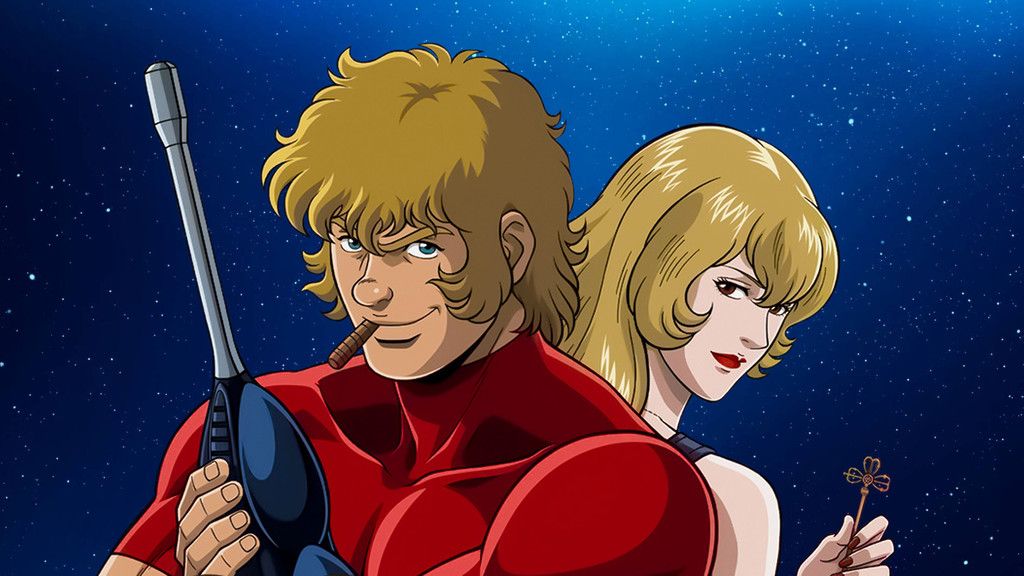
Terasawa’s Daichi, Be Blue got an honourable mention in a Tezuka prize committee, but he was already striking out on his own. Terasawa jettisoned his early work in girls’ manga as soon as he was able, confessing in later interviews that he had always felt out of sorts writing shojo manga, and that his heroines inevitably ended up in their underwear anyway, all in the best possible taste. In 1977, he placed a one-shot manga called Cobra in a special issue of Weekly Shonen Jump, and the following year he began serialising a longer version. He had hit the zeitgeist at precisely the right time, generating a long space saga just as Star Wars took the world by storm. “Nobody really understood what sci-fi was,” he said. “When Star Wars came out, I realised if I break it down like this, even children could understand.”
Space Adventure Cobra or Space Cobra, as it was often known, would become Terasawa’s life’s work, eventually stretching out across 18 volumes. It began with Philip Dickian reversals, as an everyday salaryman visits a virtual tourist agency, asking for an experience involving space wars and lovely ladies. The process instead inadvertently triggers his real memories, of being a space pirate called Cobra, who has altered his appearance and redacted his own memory in order to hide from his vengeful rivals.

Terasawa cited multiple influences, mainly from the cinema – James Bond, Jean-Paul Belmondo, and Clint Eastwood. He admitted to basing the figure of Jane Royal, Cobra’s kinky-booted bounty hunter, on Jane Fonda in Barbarella, but didn’t know at the time that Barbarella itself began life as a comic. Cobra was adapted into an anime movie and 31-episode anime TV series in 1982, making Terasawa’s fortune and establishing him as an early anime celebrity in several European countries.
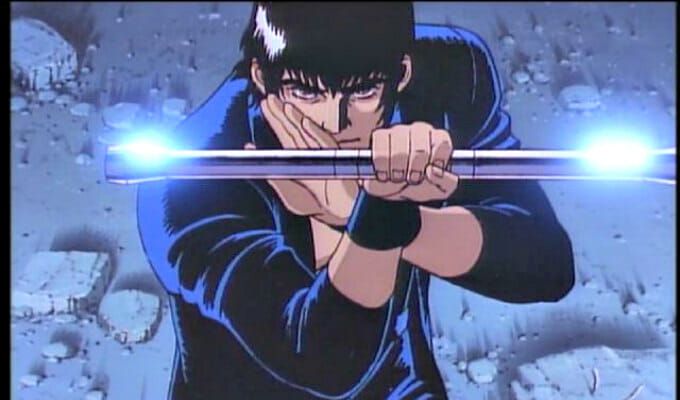
Nothing would ever overtake Cobra in Terasawa’s output. But with the anime money-train already leaving the station, he didn’t need to draw another long-running series. In the mid-1980s, he contented himself with one-shots and shorts, just enough to generate the intellectual property for another anime spin-off. Goku: Midnight Eye, thinly inspired by the character of the Monkey King, featured a detective able to access every computer in the universe – Monkey riding a very different kind of “cloud”, before the term was ever popularised. Raven Tengu Kabuto featured another studly Terasawa hero, this time as a mystical warrior in samurai-era Japan, fighting an evil sorceress.
Terasawa was fortunate not only to have a parcel of properties in the anime pipeline, but an unexpected helpmeet in reaching foreign audiences. For a time, his management office boasted a young American woman who jokily described herself as a “talking monkey”, handling his overseas communications, interpreting and business deals. Trish Ledoux, for it was she, went on to become the editor of Animerica magazine, in which capacity she not only shilled for Terasawa with American readers, but pushed his stuff at her colleagues at Britain’s Manga Mania magazine. It became something of a running joke that some issues of Manga Mania were a game of “Buichi Bingo” – guessing how a mention of him would be shoehorned in, by an editorial team (sometimes including me) grateful for the ease of access.
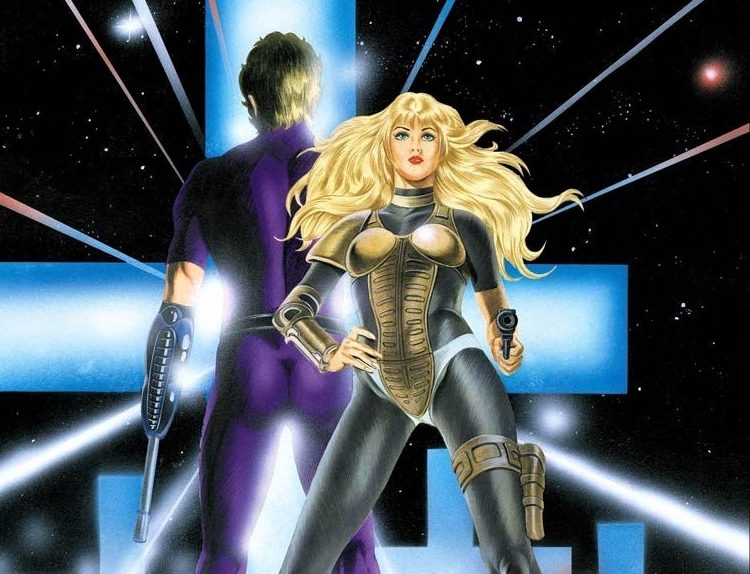
Ledoux mounted a passionate defence of Terasawa’s treatment of female characters, which was often derided as misogynistic and exploitative. “As an artist,” she wrote, “Terasawa happens to be a man who admires the female derrière…. He’s an artist who makes no bones about what he likes and what he doesn’t. I admire that kind of honesty. And to be frank, I appreciate the fact that the women in Terasawa’s manga are women, realistically proportioned and zaftig in all the right places.”
Terasawa embraced the cyberpunk aesthetic with gusto, showing up at conventions all in black, with shades and a perm. With the money rolling in, he let it take over his studio, “Black Sheep”, which was painted all in black, with black furniture and a black business card etched in silver.
“I don’t use black toothpaste,” he confessed to Takayuki Karahashi in Animerica, “but everything inside my dresser is black, so I have a hard time telling all my clothes apart.”
The middle of the 1990s was the peak in Terasawa’s overseas exposure, shortly before a mooted Cobra movie project was brought crashing down by the production company’s bankruptcy. I remember cryptic asides at the occasional Manga Entertainment pub lunch, about “that guy with the money in the brown paper envelopes,” an unnamed figure who somehow diddled Terasawa and several investors out of a fortune. Terasawa himself was crushed and dejected by the experience, having spent six months labouring over storyboards, and now with nothing to show for it.
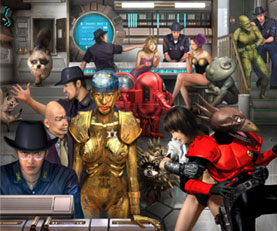
He did repurpose the work in digital form, having already become one of the pioneers of e-comics, in part because his interest in colour artwork risked making paper versions of his manga prohibitively expensive. However, even as he worked on his new series, Gundragon, he suffered the first symptoms of a brain tumour that would severely affect his career. Over the next few years, Terasawa underwent several surgeries, ultimately leaving him wheelchair bound and paralysed on the left side of his body.
Fortunately for him, he drew with his right hand. He continued to manage his intellectual properties, setting up a rights management company in 2003, and revisiting several of his old classics in new formats. He wrote a girls’ version of the Cobra story, and also concocted a retcon storyline designed to explain why two of his female characters looked so similar that they had to be related. In 2018, he unleashed a fierce Twitter attack on a clothing company that had released an image without permission that played upon Cobra’s iconic “Psychogun”, calling the creator ill-mannered, and demanding that he seek permission through the proper channels.
Terasawa also recalled once getting into an argument in a bar with the president of the Directors Guild, who refused to admit that there was anything more to Japanese culture than kabuki. He was hence rather pleased with himself when he travelled abroad, and discovered that his line of work had many followers.
“In my first interview in France,” he said, “both the director and the cameraman spoke Japanese. I was so surprised. I asked them how they spoke it so well. They said they learned Japanese from watching anime. It was anime that got them interested. They took Japanese classes so they could watch anime in Japanese. I thought that was fantastic.”
Leave a Reply